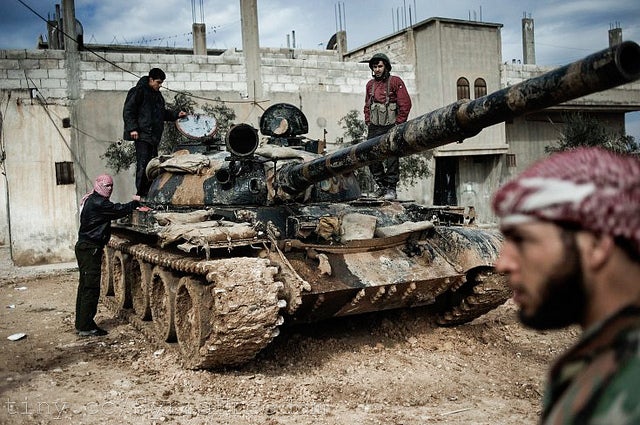
Barry S. Levy and Victor W. Sidel
Climate change causes or contributes to many adverse environmental consequences, including global warming, extreme deviations in rainfall, extreme weather events, sea level rise, droughts, floods, and wildfires. In addition, climate change threatens human health, such as by increasing the risk of heat-related disorders; respiratory and allergic disorders; vectorborne, waterborne, and foodborne infectious diseases; malnutrition due to food insecurity; mental disorders; and collective violence.
Collective violence is violence committed by members of a group against another group of people in order to achieve political, economic, or social objectives. It includes armed conflict, state-sponsored violence (such as genocide and torture), and organized violent crime (such as gang warfare). Collective violence causes much illness and death, damage to the health-supporting infrastructure of society, forced migration, environmental damage, diversion of resources, and more violence. It also threatens basic human rights identified in the Universal Declaration of Human Rights, such as the right to a standard of living adequate for health and well-being (including rights to food, clothing, housing, health care, and social services) as well as the right to security.
Climate change has been associated with violence for hundreds of years. One study, for example, examined this association from 1500 to 1800 in the Northern Hemisphere.1 During this period, climate change was the major factor in causing armed conflict and other major humanitarian crises—and social mechanisms failed to prevent these crises. The study concluded that falling temperatures reduced agricultural production, which led to war as well as other major societal problems, including inflation, famine, and population decline.2
While there are many individual studies that provide evidence of a causal link between climate change and violence, the strongest evidence comes from meta-analyses that pool and analyze data from numerous studies together and draw strong conclusions from this large database. One meta-analysis, based on 60 longitudinal studies, found that deviations from normal precipitation and mild temperatures significantly increased the risk of conflict, especially in poorer populations.3 The authors concluded that with increasing temperatures over future decades, there could be substantial increases in conflict.
When climate change leads to decreased rainfall, it worsens freshwater shortages, most notably in water-stressed countries in the Middle East, North Africa, and South Asia. These shortages are already being worsened by high population growth rates, rapid urbanization, industrialization, and modernization. Since 1960, conflicts over water, both within and between nations, have increased substantially, with more than two-thirds of them occurring in the context of violence.
The start of the civil war in Syria may have been associated with climate change. Between 2006 and 2010, a drought in Syria transformed 60% of the land into desert and, by 2009, may have killed 80% of cattle.4 Hundreds of thousands of farmers migrated to cities, seeking work, and many felt they were mistreated by the government which contributed to the first spark of civil war.
Rising sea level may also contribute to violence, especially among the 20% of the world’s population residing in coastal areas. Some island nations may disappear and coastal regions may become uninhabitable, forcing many people to become climate refugees within their own or neighboring countries. Sea level rise will likely increase saltwater incursion into river deltas and coastal groundwater aquifers, damaging crop land, causing food and water shortages, and forcing people to migrate. These displacements could cause violent social, economic, and political upheavals as people and groups compete for control of land and other resources.
In addition to controlling emission of greenhouse gases, which are the major contributor to climate change, measures need to be taken to reduce collective violence by addressing its other potential causes, which are often exacerbated by climate change. These measures include preventing or reducing socioeconomic inequalities, violations of human rights, and other forms of social injustice that are often the underlying causes of violence. Non-violent approaches to resolving conflict, such as mediation, will be needed.
All sectors of society will need visionary leadership to mitigate and adapt to climate change, thereby reducing the possibility of collective violence and protecting health and human rights.
Barry S. Levy, MD, MPH, is an Adjunct Professor of Public Health at Tufts University School of Medicine, Sherborn, MA.
Victor W. Sidel, MD, is Distinguished University Professor of Social Medicine Emeritus at Montefiore Medical Center and Albert Einstein College of Medicine, and an Adjunct Professor of Medical Ethics in Medicine and Adjunct Professor Health Care Policy and Research at Weill Cornell Medical College, New York, NY.
Please address correspondence to Dr. Levy. Email: blevy@igc.org.
References
1 D.D. Zhang, P. Brecke, H.F. Lee et al, “Global climate change, war, and population decline in recent human history,” Proceedings of the National Academy of Sciences 104 (2007), pp. 19214-19219.
2 ibid
3 S.M. Hsiang, M. Burke, and E. Miguel, “Quantifying the influence of climate on human conflict,” Science 341, 1235367 (2013), DOI: 10.1126/science.1235367.
4 NPR staff, “How could a drought spark a civil war?” National Public Radio, September 8, 2013. Available at http://www.npr.org/2013/09/08/220438728/how-could-a-drought-spark-a-civil-war
Previous publications by Barry S. Levy and Victor W. Sidel in HHRJ
Collective Violence Caused by Climate Change and How It Threatens Health and Human Rights, June 2014
